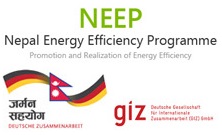Overview
The major uses of energy in buildings are for lighting, cooling, pumping water and for operating equipment and appliances. The amount that each contributes to the total energy use varies according to the climate, type of building, number of working hours and time of the year.
Most commercial buildings use the large amount of energy for human comfort. It is not an easy task to generalize building energy efficiency by the type of buildings following the fact that energy use in the particular location is determined by numerous variables.
Energy efficiency in commercial building start from the design phase thus it is very important to consider the building envelope.
- The building envelope refers to the exterior façade, and is comprised of walls, windows, roof, skylights, doors, and other openings.
- The envelope protects the building's interior and occupants from the weather conditions and other external elements.
- The design features of the envelope strongly affect the visual and thermal comfort of the occupants, as well as energy consumption in the building.
The Exterior and semi-exterior portions in the context of defining as building envelope include:
- Elements that separate the conditioned spaces from the weather conditions, or
- Elements of a building that separate the conditioned spaces of the building from the unconditioned spaces, i.e. office space from unconditioned storage.
Energy Efficiency Measures in Buildings
a) Building Envelope Design Basics
- From an energy efficiency point of view, the envelope design must take into consideration both the external and internal heat loads, as well as day lighting benefits.
- One of the goals of the envelope design should be to introduce day lighting into the interior space of the building through windows and skylights, thereby reducing the need for electric lighting.
- Secondly, to maintain thermal comfort and minimize internal cooling / heating loads, the building envelope needs to regulate and optimize heat transfer through roof, walls, windows, doors and other openings.
b) Air-Conditioning System:
- Weather stripping of Windows and Doors to avoid air infiltration
- Temperature and Humidity Setting: 230-250C & 55%-65% RH
- Chilled Water Leaving Temperature ≥ 70C (Every 1o C ↑ of chilled water leaving temperature ≈ ŋcentrifugal chiller ↑ by about 2¼ %
- Chilled Water Pipes and Air Ducts: properly insulated
- Chiller Condenser Tubes: cleaned and scales removed
- Cooling Towers: ensure water returning to the condenser is less than or equal to the ambient temperature
- Air-handling Unit Fan Speed: install frequency converters
- Air Filter Condition: to be maintained clean
c) Lighting System:
- Switch off Lights When Not in Use
- Provision of Separate Switches for Peripheral Lighting
- Install High Efficiency Lighting System
- Fluorescent Tube Ballasts – use electronic ballasts
- Use Lamp Fixtures or Luminaries made of aluminum, silver or multiple dielectric coatings
- Integration of Lighting System with Air-Conditioning System ensures that lesser heat will be directed from the lights into the room.
- Cleaning of Lights and Fixtures
- Use Light Colors for Walls, Floors and Ceilings
d) Pumping System:
- Installation of high efficiency Pumps
- Operation of pumps in Parallel
- Auto pump operation with low/high level flow control system
- Installation of VFD for chiller water and cooling water pumps.
e) Escalators and Elevators:
- Specify energy efficient equipment in the system
- Do not over design the System
- Suitable zoning arrangement
- Suitable control and energy management to lift equipment
- Use of light weight material to decorate the car.
- Good housekeeping.
Reference:
Bureau of Energy Efficiency India (BEE), 2005: Guide book for National Certification Examination for Energy Managers and Energy Auditor - BOOK 3- Energy Efficiency Electrical Utilities. Chapter 10-Energy Conservation in buildings and ECBC.



